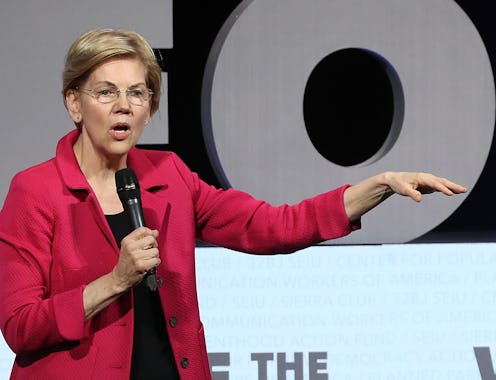News
Here’s A Look At Who Has The Power To Get Rid Of The Electoral College — And Who Doesn’t

In recent weeks, several Democratic presidential candidates have called for the electoral college to be abolished. After all, two of the last five presidential elections have been won by Republicans candidates who lost the popular vote but eked out a victory in the electoral college. But although there are several ways America could change its system of electing presidents, the Supreme Court abolishing the electoral college isn't one of them.
That's because the Electoral College is enshrined in the Constitution, and the Constitution can only be changed via an amendment. The constitutional amendment process is very long and complicated and can play out in different ways, but the decision largely lies with individual states (and, to a much smaller extent, the U.S. Congress). Unless a legal dispute was waged during that process, the Supreme Court would have no role in the decision.
In order for the Constitution to be changed and the Electoral College eliminated, two things would need to happen, according to Article V of the Constitution. First, a proposal to amend the Constitution would have to be approved by either two-thirds of the Senate and the House of Representatives or, alternatively, by a constitutional convention called for by the legislatures of two-thirds of the 50 states.
This would merely begin the process, however. The proposed amendment would then have to be ratified by at least three-fourths of the states, according to the Constitution. A proposed amendment gets ratified in one of two ways: Either through a vote in the state legislature or by a statewide constitutional convention. The Constitution gives Congress the option of deciding which method should be used with any given proposed amendment.
After three-fourths of the states ratify an amendment — and only after three-fourths of the states ratify an amendment — is the Constitutional officially amended.
Needless to say, it's difficult to get three-fourths of the states to agree on much of anything, let alone an amendment so controversial and politically-charged as abolishing the Electoral College. That's why some proponents of nixing the arcane electoral process have devised an alternative way of doing so, one that would potentially be much easier.
The National Popular Vote Interstate Compact (NPVIC) is quite simple. First, a state passes a law stating that, during presidential elections, all of the state's electoral votes will be awarded to the winner of the national popular vote. Then, more states pass the same law. The goal is for some combination of states with 270 electoral votes or more between them to pass a law like this; if that happened, the electoral college would still exist but would be effectively irrelevant, as the winner of the nationwide popular vote would automatically win 270 electoral votes — and thus, the presidency.
The advantage of the NPVIC is that it doesn't require the approval of three-fourths of the states; by design, it requires the buy-in of only a combination of states whose electoral votes total 270 or more to take effect. As of this writing, 14 states and Washington DC have enacted the NPVIC, according to its website; in total, they have 189 electoral votes between them. This means that, if some combination of states with 81 or more electoral votes between them pass NPVIC laws, the Electoral College will, for all practical intents and purposes, be eliminated.
That's not inconceivable. According to the NPVIC website, NPVIC bills have passed one branch of the state legislature in an additional eight states totaling 72 electoral votes, and have cleared committee votes unanimously in two other states totaling 26 electoral votes.
One thing is for sure, though: If the Electoral College does get abolished, the nine justices of the Supreme Court won't be the ones to do it.